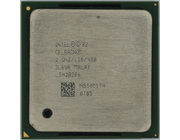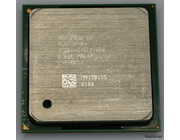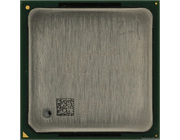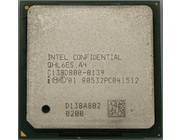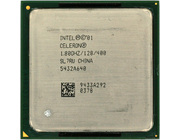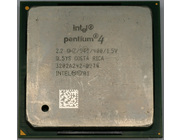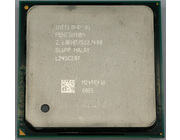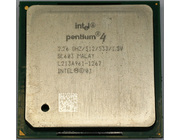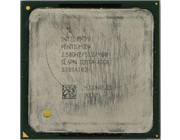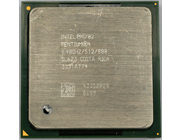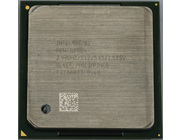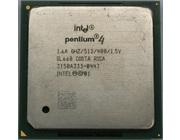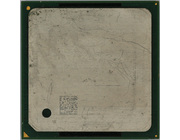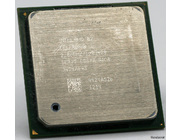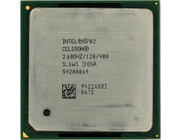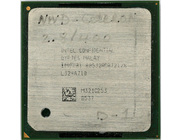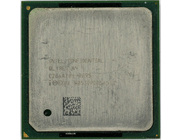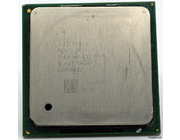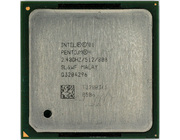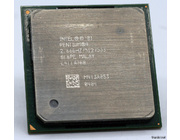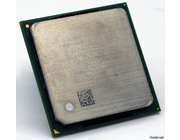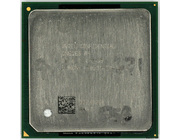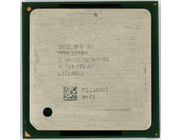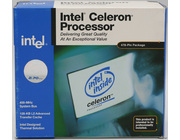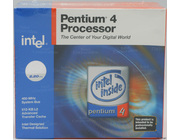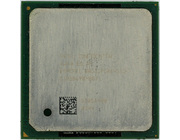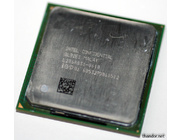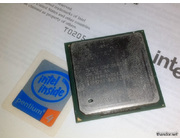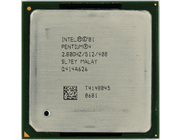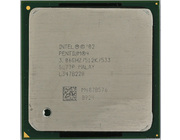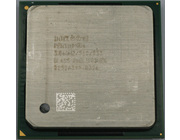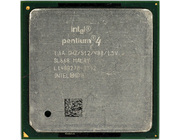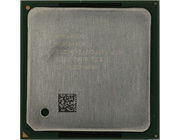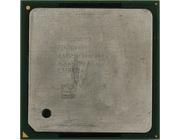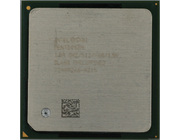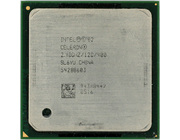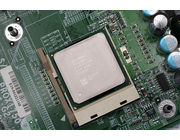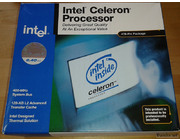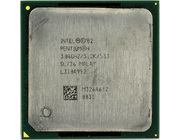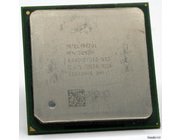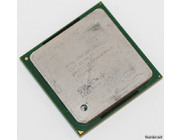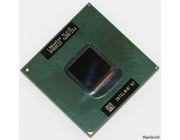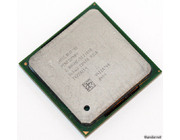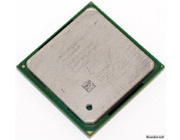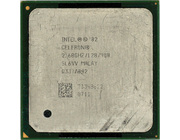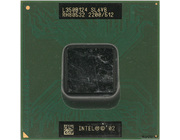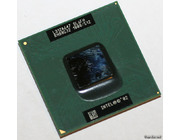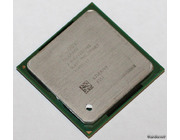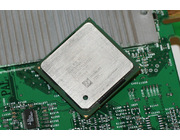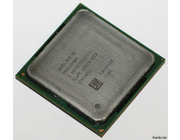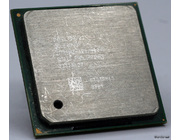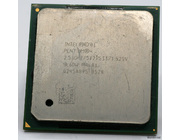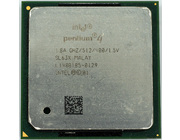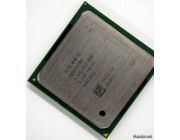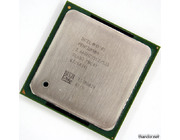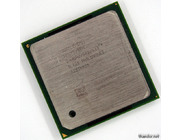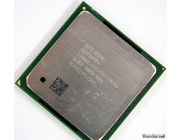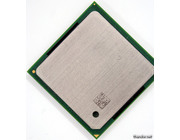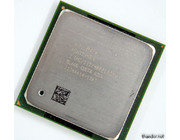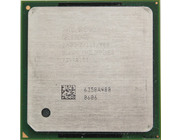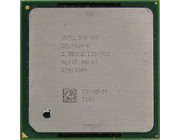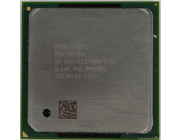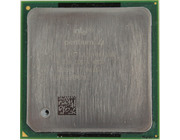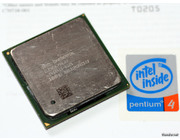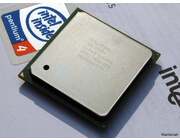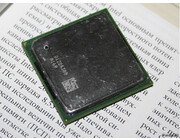Successor of the 'Willamette', and a fine one! Northwood had several improvements including bigger L2 cache (512KB), 130nm manufacturing process which made the CPU run cooler and reach higher clock frequencies.
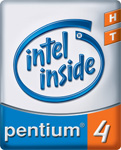 | At last but not least it came with Hyper Threading on the 3.06GHz version. Hyper Threading might have been in development during the Willamette (but not activated), but I'm not sure about this. Nevertheless Hyper Threading added an extra 'core' in the operating system to increase performance. It was by far not equally as fast a real core but it can give extra performance in some situations. The 'Northwood'-core is also used in the Celeron, but is cut down on L2-cache which causes a performance hit. |
I wrote a timeline to get an insight of what was going on at the time when first rumors of Northwood were available until the release of Northwood:
Northwood timeline
29 April 1999Rumours about future Intel IA-64 chip (successor to Merced) that will run at 3000MHz. The chip is bound to be released in about 4 to 5 years.
10 September 1999
Rumours about 3GHz haven't changed. Willamette (first Pentium 4) and Foster (first Xeon) will be based on the P6 core and was planned for Q4 2000 but might be delayed to
early 2001. In 2002 it will be made with an 0.13nm manufacturing process rather than 0.18nm.
6 February 2000
Northwood will be the 0.13nm mobile version of Willamette.
11 March 2000
VR-Zone has new information: Willamette will release at 1.3GHz and 1.4GHz in Q4 2000. In Q4 2001 Intel will release
Northwood at 2GHz.
11 August 2000
C|Net says that Northwood will be released in Q3 2001 and will be an improved version of Willamette. It will support RDRAM, SDR-SDRAM and DDR-SDRAM and will run at 2GHz.
Oktober 2000
Socket 423 will be used for Willamette and Socket 478 will be introduced with the release of Northwood.
4 ~ 10 September 2000
My Pentium 4 1.5GHz Willamette Engineering Sample.
20 November 2000
Intel released 1400MHz and 1500MHz Pentium 4 Willamette.
1 January 2001
The 1.3 Pentium 4 (Willamette) will be released in January 2001 for $410 which is twice as expensive as an Athlon 1.2GHz Thunderbird.
9 February 2001
Northwood will be released in Q3 2001.
27 Februari 2001
Pentium 4 announced at IDF (Intel Developer Forum)
18 April 2001
The Register writes that 0.13nm chips won't be released in 2001.
28 April 2001
Rumours that 0.13nm chip will be delayed because not all factories are finished on time.
25 May 2001
Intel announced that the Pentium 4 2.0 Willamette at 0.18nm wil be released in Q3 2001.
28 May ~ 3 June 2001
My Pentium 4 1.5GHz Northwood Engineering sample.
4 June 2001
Photo's of the new socket 478 Pentium 4 engineering samples pop up. On Computex Intel shows the new i845 Brookdale chipset for the Pentium 4 at S478.
6 June 2001
First samples of the 0.13nm Pentium 4's go out to motherboard manufacturers. The 0.13nm chip will have improvement, 512KB L2, higher clock frequencies and lower
production costs.
Benchmarks are released; a Pentium 4 1.5GHz scores 427 points with 3DMark2000 CPU test and the new AMD Palomino at 1GHz scores 578 points. Both systems ran with CAS3
PC133 SDR-SDRAM.
7 June 2001
The Inquirer announces that the 0.13nm Northwood at 2GHz and 2.2GHz will be released in Q4 2001.
27 August 2001
Release of the 1.9GHz and 2.0GHz Pentium 4 Willamette CPU's.
29 August 2001
Intel shows a 3.5GHz Pentium 4 Northwood on the Intel Developer Forum. On 3GHz Intel showed an demo with 100% CPU usage (Quake 3, movies and file copies).
11 October 2001
It's difficult to buy S478 Pentium 4's. Chipsets and sockets aren't much available.
12 October 2001
Release of the Northwood delayed to Q1 2002.
16 October 2001
Review of the Athlon XP 1800+ which costs one-third of a Pentium 4.
22 October 2001
Benchmarks pop up and an 1.8GHz Northwood sample is being overclocked to 2.26GHz.
5 November 2001
Introduction of Athlon XP 1900+
My Pentium 4 2.0 Northwood Engineering sample.
14 December 2001
Distributors put 2.2GHz Pentium 4 Northwood on their list. Pre-orders are possible.
18 December 2001
The Pentium 4 Northwood at 2GHz and 2.2GHz will be released on 7 January 2002.
Reviews pop up on Hardware.fr. The Athlon XP 1800+ can get close to the 2.2GHz Northwood. Running a Willamette, Northwood and Palomino on 1.5GHz clearly shows that the
Athlon XP has the best clock-for-clock performance.
24 December 2001
Pentium 4 2GHz Northwood available in Japan.
30 December 2001
Pentium 4 2.2GHz and Athlon XP 2000+ also spotted in Japan.
2 January 2002
Pentium 4 2.2 overclocked to 3GHz using 1.9V.
7 January 2002
Official release of the Northwood.
